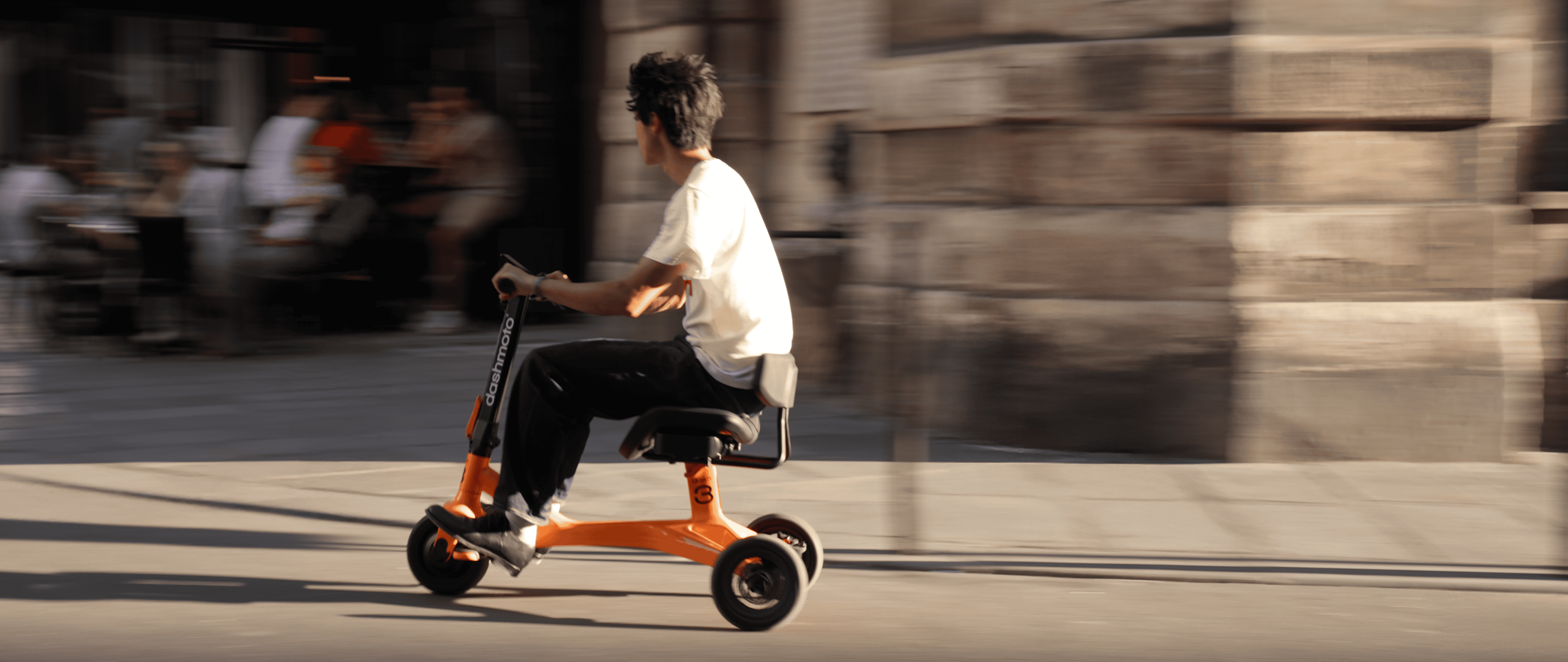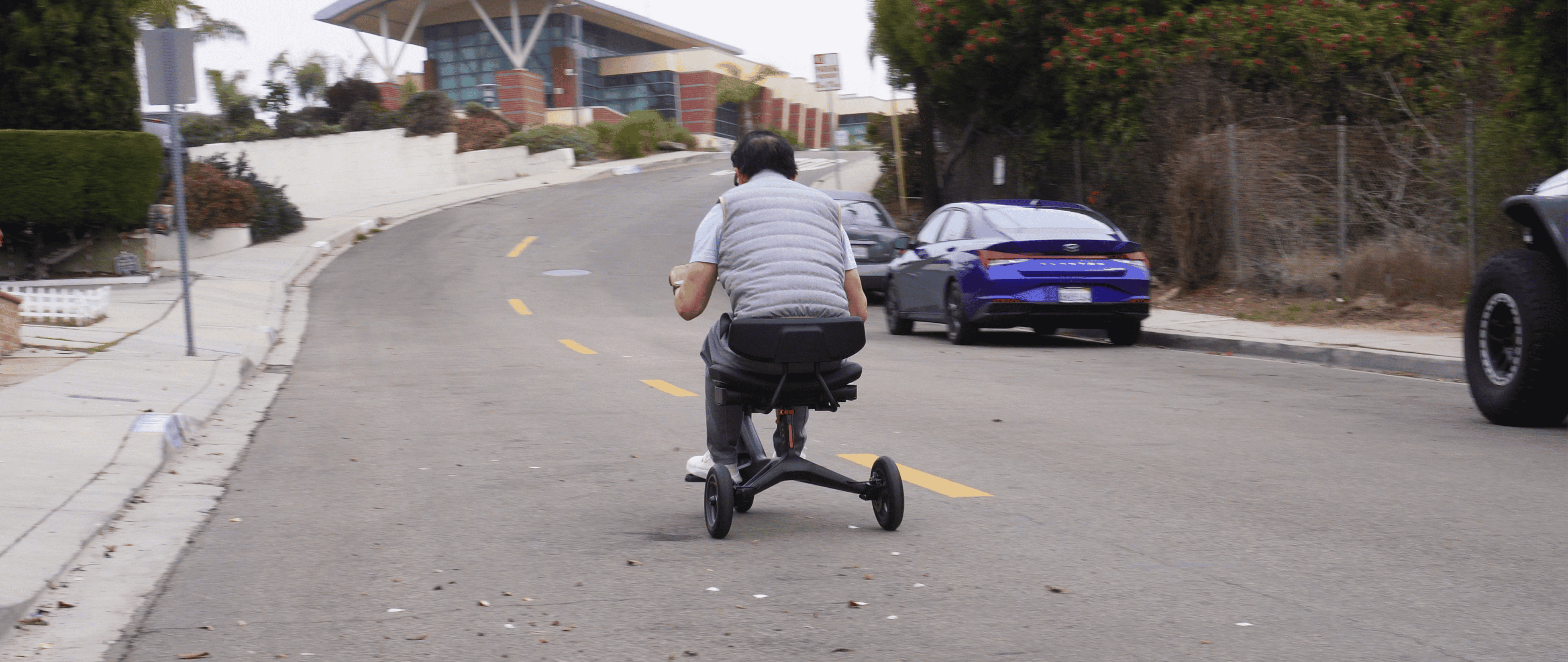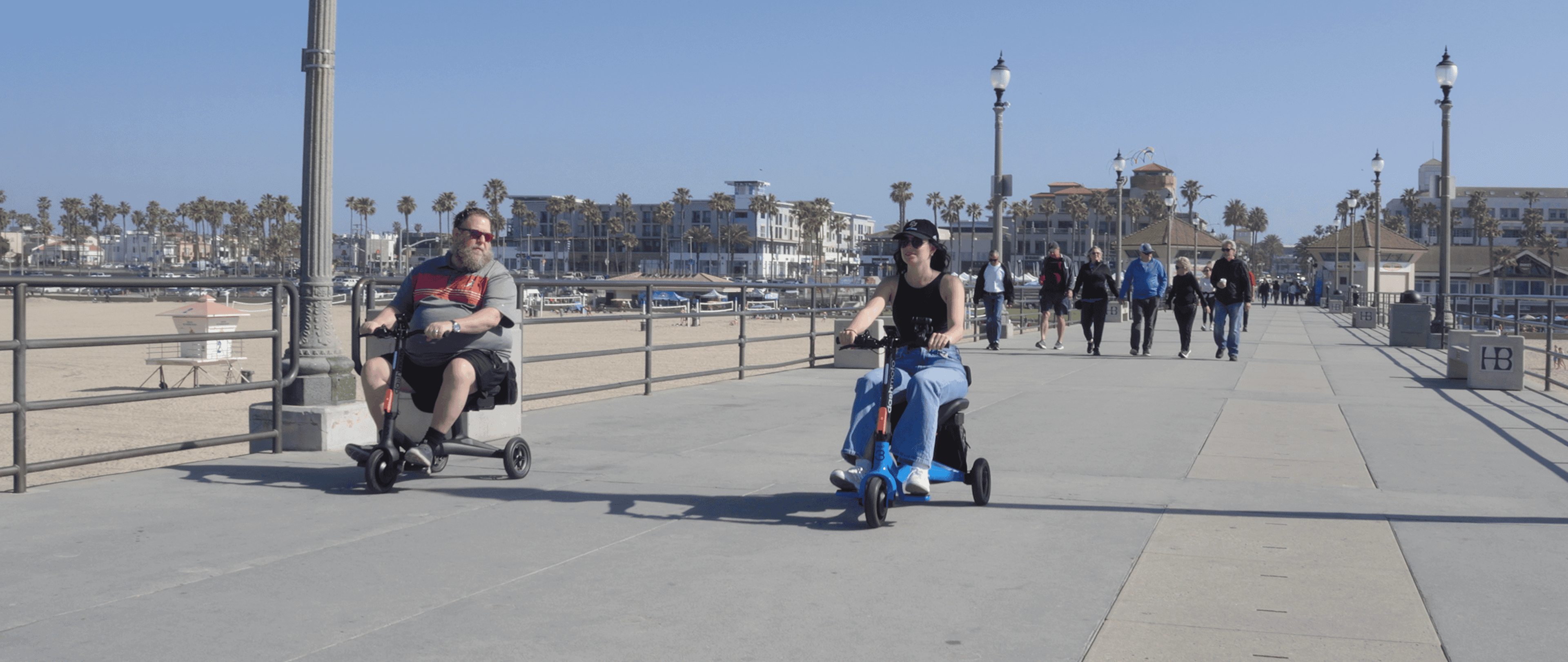Are Mobility Scooters Allowed on the Road?

If you use a mobility scooter for daily travel, understanding where you’re legally allowed to ride is essential.
Laws vary depending on location, scooter type, and whether you're on public roads, sidewalks, or bike paths. And while rules can feel confusing, the truth is simple—knowing where to ride safely gives you more freedom and peace of mind.
This guide breaks down where mobility scooters are permitted and how to ride safely and legally.
Understanding the legal classification of mobility scooters
Most mobility scooters, including the dashmoto® dash 3, are classified as personal mobility devices. They are not considered motor vehicles, which means they aren’t governed by the same rules as cars or motorcycles.
Instead, they often fall under accessibility or pedestrian-focused regulations. That classification is what allows you to ride through indoor environments like malls, airports, or even grocery stores without any special license.
What this means for everyday riders
In the U.S., there’s no universal legal category for mobility scooters, but the general principle is that they are seen as assistive devices. Think of it this way: if a person needs a device to move around safely and independently, that device should be allowed in the same places a pedestrian would be.
In places like the UK or EU, mobility scooters are sometimes labeled Class 2 or Class 3, with restrictions based on their speed and where they can be used. While those classes don’t exist in the U.S., similar ideas apply—if your scooter is designed for safe, low-speed mobility, you can expect broader access rights.
Still, it’s smart to check local rules. Cities, counties, and states may each have different definitions, especially when it comes to motorized mobility aids and sidewalks.
Can you ride a mobility scooter on the road in the U.S.?
This is where the question gets more specific: are mobility scooters allowed on the road in the United States?
In most U.S. cities and towns, the answer is usually yes, but only under certain conditions.
Why road access is limited
Mobility scooter road laws typically allow you to ride on the road only if there’s no safe sidewalk or alternative path available. If a sidewalk is present and usable, that’s where most riders are expected to be. If there’s no sidewalk or it's blocked or unsafe, then you’re generally permitted to ride on the far right side of the road, just like a bicycle.
Some states or municipalities allow limited road use for crossing intersections or very short distances. Others give more flexibility, especially in places that prioritize accessibility.
Again, this varies by location. Always refer to your state’s Department of Transportation (DOT) or local DMV for the most accurate guidance.
And if you're ever in doubt—err on the side of caution. Your safety is more important than speed.
When it’s safer to stick to sidewalks or bike paths
Sidewalks are usually the safest option for mobility scooter users. That’s where you’ll find the least traffic risk and the most predictability. Still, riding on sidewalks comes with its own rules.
How to share space with pedestrians
The biggest one? Yield to pedestrians. Always. No matter how smooth or open the sidewalk feels, pedestrians have the right of way.
Luckily, the dashmoto® dash 3 makes it easy to ride responsibly in pedestrian zones. With 3 drive modes and a smooth hand throttle, you can adjust your speed instantly. Whether you’re moving at a relaxed walking pace or cruising past parked bikes, you stay in full control.
Some cities also have shared-use paths for cyclists and pedestrians. These are great for mobility scooters—just be mindful of how fast you're going and give people space when passing.
In all pedestrian environments, slower is smarter.
Tips for safely using a mobility scooter near or on roads
If you’re going to ride on or near roads, safety becomes even more important.
Basic tips to boost visibility and safety
Here are some smart mobility scooter safety tips to follow:
- Stay visible. Wear reflective gear or bright colors, especially if riding near traffic or after dark.
- Use your lights. The dash 3’s 60-lumen front LED and rear brake light aren’t just stylish—they help others see you.
- Stick to smooth, level surfaces. Avoid broken pavement, potholes, or roads with fast-moving traffic.
- Plan ahead. Know your route, and avoid areas where scooters are restricted or conditions aren’t safe.
- Signal your intentions. If you’re turning, reversing, or stopping suddenly, use hand signals or make eye contact with nearby drivers or cyclists.
Even though e-scooter and sidewalk regulations are constantly evolving, the basics of safe riding don’t change. Be visible, be predictable, and stay alert.

How the dash 3 makes street-legal riding safer
Let’s talk about why the dash 3 was built for real-world riding.
Its ultra-bright LED lighting keeps you visible on roads, sidewalks, and even darker parking garages. The rear brake light adds an extra layer of safety, especially when stopping near traffic.
Built to handle real-world conditions
The carbon fiber frame isn’t just a visual statement. It’s a single-piece T700 carbon construction that’s strong, ultra-light, and built to absorb real-world impact. That gives you more stability on uneven ground and a smoother, quieter ride.
Need to pick up the pace on wider roads? The 500W motor and adjustable drive modes give you the power and speed you need, with a top speed of 18 mph. You can slow it down for crowded areas or cruise confidently when space opens up.
Navigating tight spots like curbs, crosswalks, or tight elevators? The dash 3’s 2.5-foot turning radius makes it incredibly agile. Add in the electronic hill hold and reverse gear, and you’re always in control—even on steep inclines or busy sidewalks.
It’s also compact. Remove the seat, fold the head tube, and the whole unit fits in your trunk or closet. Whether you're commuting, traveling, or running errands, the dash 3 goes wherever you go, and rides the way you need it to.
Mobility scooter laws vary, but your freedom shouldn’t
So, are mobility scooters allowed on the road? In many places, yes—but with care, awareness, and smart planning.
Where you ride depends on your environment, local laws, and the type of scooter you use. The good news is that the dash 3 was engineered for all of it. Sidewalks, streets, paths, or even airport terminals—this scooter is built for a world that doesn’t slow down.
From mobility scooter road laws to where can I ride a mobility scooter, the key is always safety and control. And that’s what the dash 3 delivers.
Check your local regulations, ride with confidence, and trust your gear. The road is yours.
Want to get a piece of the freedom the dash 3 has to offer? Pick one up for yourself today.
Related posts

Electric Mobility Scooter Laws 2025 - What Riders Must Know by State
Stay updated on electric scooter laws in 2025 with our state-by-state guide. Learn about speed limits, helmet laws, and where to ride legally.